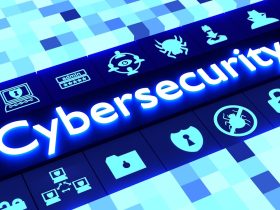The lifestyle of Generation Z is reshaping the cybersecurity landscape due to their innate familiarity with technology. Born into an era of rapid technological advancement, Gen Z’s digital habits, preferences, and interactions play a pivotal role in shaping market trends and cybersecurity challenges. Let’s delve into how their behaviors intersect with cybersecurity and explore potential solutions to address these issues.
Digital-First Communication: Gen Z heavily relies on online platforms like social media, messaging apps, and video calls for communication. However, this increases their vulnerability to phishing attacks and privacy breaches. Cybersecurity education is crucial, emphasizing the importance of software updates and strong, unique passwords to bolster security across different platforms.
Mobile Device Usage: Smartphones are the primary devices for Gen Z, but they face additional risks like unsecured Wi-Fi networks and mobile malware. Robust mobile security solutions and awareness of secure practices, such as enabling multi-factor authentication, are essential to mitigate these risks.
Online Gaming: Gen Z’s love for online gaming exposes them to cybersecurity threats like account hacking and scams. It’s vital to protect gaming environments and educate users about safe gaming practices. Implementing robust verification methods and real-time monitoring can help detect and respond to suspicious activities quickly.
Privacy-Conscious Behavior: While active online, Gen Z values privacy and demands advanced privacy features. This drives the need for stringent privacy laws and solutions like VPNs and encrypted messaging apps. Companies should offer comprehensive user controls to empower individuals to manage their data effectively.
The Gig Economy and Remote Work: Gen Z’s inclination towards freelance work and remote opportunities underscores the importance of secure remote access solutions and cybersecurity training. Employers should provide guidance on secure data handling practices, and remote access software must be configured to restrict unauthorized access.
Emerging Technologies and Lifestyle Choices: Gen Z’s adoption of IoT devices and online shopping increases the risk of fraud and identity theft. Secure online transactions are imperative, with companies like Voopoo leading the way in implementing robust data protection measures. Educational initiatives should inform users about privacy implications and encourage regular privacy audits.
Educational Platforms and Online Learning: As Gen Z embraces online education, securing digital learning platforms and protecting student data become paramount. Institutions should conduct regular security audits, and users need training in recognizing cyber threats like social engineering attacks.
Activism and Social Engagement: Gen Z’s activism on digital platforms makes them susceptible to attacks aimed at suppressing dissent or spreading disinformation. Using secure communication channels and enhancing monitoring systems can mitigate these risks. Additionally, verifying sources and cross-referencing news are crucial steps to combat misinformation.
In conclusion, addressing cybersecurity challenges in the age of Generation Z requires a multifaceted approach, including education, technological innovation, and regulatory measures. By understanding their digital behaviors and needs, we can better protect individuals and society from cyber threats in the digital age.
Source: forbes.com














Got a Questions?
Find us on Socials or Contact us and we’ll get back to you as soon as possible.